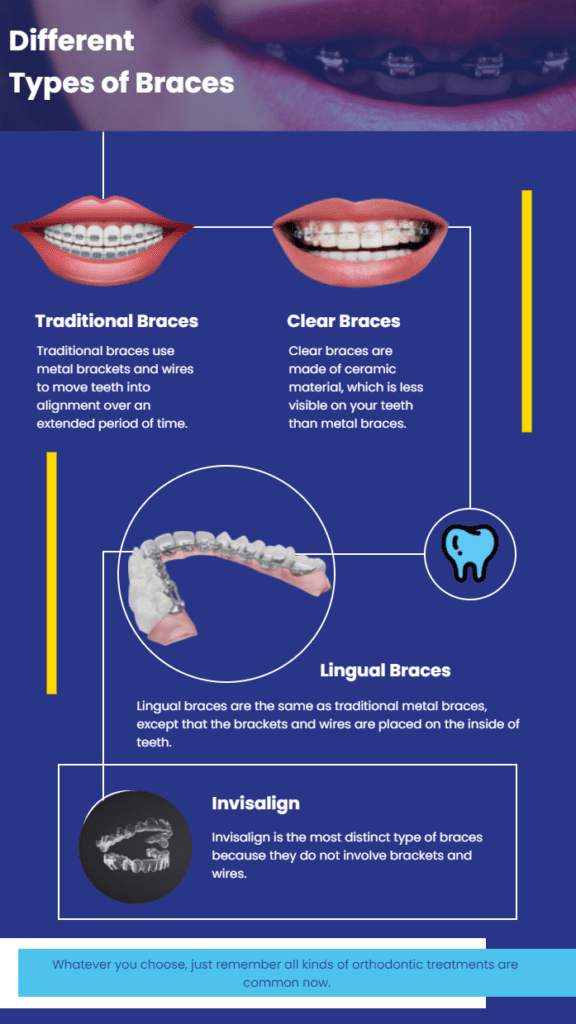Comprehensive Overview to Orthodontics Treatments for Remedying Oral Imbalances
In the realm of orthodontics, the trip to achieving a flawlessly aligned smile involves a myriad of procedures tailored to correct oral imbalances. From typical braces to unnoticeable aligners and even medical choices, the area of orthodontics supplies an array of solutions to resolve varying levels of dental irregularities. Comprehending the details of each procedure, including their mechanisms, advantages, and possible disadvantages, is crucial in making notified choices regarding one's orthodontic therapy. As we navigate through the thorough overview to orthodontic procedures for remedying dental misalignments, the elaborate information of each technique will unfold, losing light on the path toward a useful and unified oral alignment.
Orthodontic Procedures Summary

In enhancement to clear aligners and traditional dental braces, orthodontists might also recommend various other interventions like headwear, palatal expanders, or retainers to deal with specific positioning problems (cumming orthodontics). These procedures are customized to each patient's special requirements and might include a mix of treatments to accomplish the desired outcomes. Routine adjustments and monitoring are important components of orthodontic treatment to make sure development gets on track and to make any kind of needed modifications along the method. By undergoing orthodontic treatments, clients can not only attain a straighter smile but additionally enhance their general dental health and feature.
Conventional Braces: How They Function
When considering orthodontic treatments for dental misalignments, traditional dental braces stand apart as a reliable method for dealing with teeth positioning. Standard braces include brackets, wires, and bands that collaborate to use continual stress on the teeth, slowly relocating them into the preferred positioning. The brackets are connected to the teeth making use of a special adhesive, and the cords are threaded via the braces. By adjusting the stress of the cords, orthodontists can control the instructions and pressure related to each tooth, assisting them right into proper placement over time.
As pressure is used to the teeth with the braces, the bone bordering the teeth is improved to support the new tooth positions. Clients will require routine adjustments at the orthodontist's office to guarantee the braces continue to use the right stress for effective teeth activity.
Unseen Aligners: Benefits And Drawbacks
These clear, personalized trays are essentially invisible when put on, making them an attractive alternative for people looking for an extra visually pleasing orthodontic treatment. Individuals can get rid of the aligners before eating or brushing their teeth, decreasing the risk of food obtaining stuck in the device and simplifying the cleaning process.

Surgical Orthodontic Options
Surgical treatments in orthodontics existing viable alternatives for attending to intricate oral imbalances that may not be successfully resolved with conventional orthodontic treatments. While typical braces and undetectable aligners can deal with a fantastic read lots of orthodontic issues, specific instances need surgical intervention to attain optimum outcomes. Surgical orthodontic alternatives are normally recommended for extreme malocclusions, significant jaw disparities, and cases where the underlying bone framework needs alteration to achieve correct positioning.
One common surgical orthodontic treatment is orthognathic surgical treatment, which includes rearranging the jaws to deal with practical concerns such as problem eating or speaking. This surgical treatment is typically performed in cooperation with an orthodontist who assists align the teeth prior to and after the procedure. Surgical orthodontics might also entail treatments to subject affected teeth, remove excess gum tissue, or improve the jawbone to produce an extra harmonious facial account.
Before thinking about medical orthodontic alternatives, people go through a comprehensive evaluation to determine the need and prospective benefits of such interventions. orthodontist. While surgical treatment might seem difficult, it can considerably improve both the feature and aesthetics of the smile in instances where standard orthodontic therapies fail
Retainers and Post-Treatment Care

Post-treatment treatment includes complying with the orthodontist's instructions carefully. This may include appropriate dental health methods, participating in follow-up appointments, and using the retainers as recommended. Failure to comply with post-treatment care guidelines can lead to relapse, where the teeth slowly relocate back in the direction of their original placements. Regular retainer wear, excellent dental health, and normal oral check-ups are essential for keeping the outcomes accomplished with orthodontic surgical treatment and guaranteeing the long-term security of the fixed oral alignment.
Conclusion
In final thought, orthodontic treatments offer various options for remedying oral imbalances. Typical braces use metal brackets and cables to change teeth into proper placement. Undetectable aligners supply a more very discreet option but may not be appropriate for all situations. Surgical orthodontic alternatives are offered for much more extreme misalignments. Retainers are commonly used post-treatment to maintain the new placement. Overall, orthodontic procedures can effectively boost dental health and visual look.
As we browse through the detailed guide to orthodontic procedures for remedying oral misalignments, the complex information of each technique will certainly unfold, shedding light on the course towards a unified and practical dental alignment. - invisalign
One of the most typical orthodontic treatments is the use of dental braces, which consist of metal braces and cords that apply mild stress to slowly shift teeth into the preferred placement.When thinking about orthodontic therapies for dental imbalances, traditional braces stand out as a tried and true you could try these out approach for remedying teeth placing. Furthermore, unnoticeable aligners may not be suitable for complicated orthodontic problems that call for more considerable teeth motion, look what i found as they are generally recommended for light to moderate cases. Retainers are personalized orthodontic tools created to hold teeth in their remedied placements after the completion of orthodontic therapy.